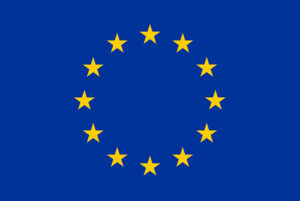Project Recommendations
INGRID Intersecting Ground of Discrimination in Italy
by CEJI. A Jewish Contribution to an Inclusive Europe
The institutionalisation of Intersectionality in the European Union has rapidly advanced since its first inclusion in the EU Gender Equality strategy 2020-2025. Today, even though differently operationalised, and not always with clear guidelines for its implementation, a vast majority of EU equality policies have succeeded in including an intersectional approach. However, as Kimberlé Crenshaw states, “Intersectionality has not only traveled from the US to Europe, but also from the margins to the center,” which might have led to a depoliticisation of the concept. 1
Nowadays, many questions arise around the implications for effectively mainstreaming this instrument at all governance levels; Are there further guidelines that need to be kept in mind to ensure a successful implementation of projects addressing intersectional discrimination? Are there any principles that should be adopted to prevent the risks of gentrification when translating such instruments in different geographical locations and fields of work?
In the context of the Ingrid project- Intersecting grounds of discrimination in Italy, the following set of recommendations are drawn from the experiences of partners throughout the project implementation aiming to provide fruitful routes to future actors designing intersectional interventions. The recommendations are based on analytical compilation of conclusions reported in the various publications of the project, contrasted with the evaluative interviews conducted between November 14 -25th, 2022 to the different partners in three main areas of INGRID’s work:
• Research: exploring whether and to what extent the intersectional perspective is acknowledged in anti-discrimination policy, practice, and law in Italy and in the European Union;
• Training; design training activities on the concept of intersectionality addressing a variety of actors operating at the forefront of discrimination in Italy;
• Anti-discrimination desks; In charge of promoting the practical application of the intersectional perspective within the services of listening, recognising, and combating discrimination in different Italian regions.
Research
Interviews conducted confirm that exploratory research is a crucial starting point to provide a framework for the later implementation of the project. In the project, research provided a comprehensive understanding of the recognition and adoption of intersectionality in anti-discrimination policy, practice, and law in Italy and at the EU level. This analytical overview anticipated the complexity of such intervention in the Italian context, which single axis approach still prevails in anti-discrimination work. This first stage of the process was also considered fundamental to building a common understanding among partners and stakeholders on the theoretical, and later practical implications of the concept in the project implementation.
The research considered not only Kimberlé Crenshaw conceptualisation, but also European organisations, and Italians authors translating the approach to new contexts bringing special attention to the positionality of Individuals, providing an understanding of intersectional identities not as a weakness, as sometimes wrongly framed, but as an emancipatory resource.
Research conducted in the field of social work, with various communities of migrants, refugees, asylum seekers, prisoners, women victims of violence, students, and different religious minorities permitted the recognition of different patterns of structural and institutional discrimination. In addition, research based on bilateral meetings with a set of institutional and non-profit bodies in Liguria, Veneto, and Trentino, allowed to better identify the need for radical innovative approaches bringing forward mora awareness on intersectionality and intersectional discrimination.
Recommendations
1. Fostering an intersectional response to discrimination requires
a structural and cultural shift in the public sector that must be taken into consideration when designing interventions.
Thus, a radical revisiting of organisations modus operandi where contamination is considered an opportunity for mutual enrichment and questioning the rigidity of notions of the “sphere of responsibility” of the public sectors needs to be contemplated to foster holistic responses to the problem of Intersectional discrimination.
2. Further efforts in network mapping processes need to take place in the Italian context to create communities of practice.
This should imply a bottom-up transfer and dissemination of knowledge of CSOs to institutions of the third sector in charge of direct responses to discrimination bridging highly fragmented policies, services, and social organisation limited by a sectorial legal framework.
3. Strengthening of the capacity building, and the process of social workers and public servants need to take place to ensure the development of an intersectional sensitivity to become reflective practitioners in transforming social services. Key actors engaged to address intersectional discrimination, need to better recognise social issues generating these particular forms of discrimination in the first place, and better support victims in process of self-identification of intersectional discrimination.
4. Strategic Awareness campaign needs to encompass further work in the area to
mitigate bias and empower narratives of intersectional identities as a resource, fostering agency, and deconstructing stigmas labeling these as “vulnerable ” communities.
Interviews were also conducted in relation to the exploratory research on the “social representation of adolescents and their experiences related to diversity, intolerance, and discrimination”. The research based on focus groups held in different classes of two schools, located in Schio a town of the Veneto region is seen by the researchers as exercise contributing to further identifying critical aspects and needs to address intersectional discrimination in the two schools of the region.
5. Further training and capacity building needs to empower teachers to
transform the school system, and classroom as active anti-discrimination spaces, developing responses in educational interventions.
6. Holistic anti-discrimination education needs to be included in all areas of school curricula including narrative building and access to tools to work on their positionality and place of speech. Peer learning education should be considered a successful methodology to foster an anti-discrimination culture in the school context.
7. Research conducted also confirms that religious minorities are often a category neglected in the anti-discrimination work. Consequently, cultivating intersectional awareness both in an educational setting and in the field of social work concerning religious minorities should be considered a priority to better address intersectional discrimination for all.
Training
Interviews conducted with partners in charge of training activities in public services, law enforcement, students, teachers, and anti-discriminations desks to confirm that experiential learning was fundamental to work on participants’ positionalities develop an intersectional sensitivity. Training activities cultivated a process of reflection stimulating a systemic reading of the self in the axes of privilege and power, and a better understanding of systemic inequalities.
Recommendations
- Strategic advocacy efforts need to be directed to a further expand hours of capacity building and promote benefits in exchange for training participation that is not mandatory.
- The so-called, Open mic activities based on focus groups with a training effect seem highly effective practices to be further developed centering the experiences of racialised and minority communities to amplify their experiences and demands. The collection of quantitative and qualitative data through focus groups in this activity seems a promising practice to develop a monitoring tool to bridge gaps in equality data collection at the local level.
Anti-discriminations desks
Interviews conducted with partners working in anti-discrimination desks stressed the relevance of operating within a network and a system of stakeholders. The contribution to training and research activities amplified the possibility to observe and analyse, with an intersectional-informed angle, the different situations and challenges faced by operators daily.
Recommendations:
Some of the general recommendations presented here have already started to be implemented by the project itself.
- As a result of the structural limitations and challenges reported by the different anti-discrimination desks, long-term resources need to be allocated to ensure sustainability and further consolidate their work, fostering an enlargement of stakeholders and promoting cooperation at the national level.
- Due to the lack of existing relevant disaggregated or intersectional data collection by the national equality body in Italy- UNAR, the strengthening of the anti-discrimination desk represents an essential step forward for the development of monitoring and data collection activity in Italy. Alongside, the creation of tools and resources to increase intersectional awareness, and visibility aiming, as well, at preventing underreporting of discrimination events.
Policy Recommendations
- INGRID’s calls for the urgent adoption of comprehensive legal, institutional and policy frameworks in Italy in the field of anti-discrimination, such as the national action plan against racism, expected to be approved by the end of this year , as stated in the EU national action plan against Racism.
- INGRID calls for more independence and human and financial resources for equality bodies and Institutions in Italy- UNAR, obeying to the proposed initiative intends to set binding minimum standards for Equality Bodies, building on the 2018 Commission Recommendation and also on other sources such as the General Policy Recommendation Nº2 of the European Commission against Racism and Intolerance (ECRI) and the Paris Principles applied to National Human Rights Institutions (NHRIs).
- Further efforts need to be allocated to coordinate a mapping process of key actors and CSO is required to ensure a representative and transversal engagement in a NAPAR coalition that directly participates in the drafting process of the National Plan Against Racism leaded by UNAR, further advocating for its approval. A NAPAR Coalition could also lead joined efforts to fight against escalating right-wing populist propaganda spreading in Italy.
- INGRID supports the call of the EU Parliament resolution on Intersectional discrimination on the “creation of a mainstreaming mechanism for cooperation and coordination for EU and national equality policies, ensuring that all types of discrimination, especially those which intersect, are taken into account in the review and adoption of policies, including through systematic gender and equality impact assessments; encourages the Member States to adopt or strengthen criminal and civil law prohibiting both intersectional and multiple discrimination and calls for the development of EU guidelines, including the exchanges of good practices on the adoption of an intersectional approach in policymaking.”2 Further EU policy development in education, and anti-discrimination need to contemplate training as fundamental tool to structurally mainstream intersectionality at the EU level.
Three key recommended principles for Intersectional project design and Implementation
These principles for intersectional intervention, project design and implementation are based on EU and International standards and contrasted by the experiences compiled through the project implementation. Whereas this section does not aim at being a final and definitive proposal, but rather an open work for further exploration and analysis to support intersectional practices, the following principles contain the most relevant ethics of action to be kept in mind when designing projects.
1. Positionality and power dynamics
Project managers and actors involved in the design and project implementation need to work on self-awareness, and deconstructing bias concerning their own positionality in the context where the project will be implemented. Actively introducing an intersectional lens, implies an accurate willingness to reflect on the power dynamics and subjectivity of the team members. What are the different advantages and disadvantages, values, and knowledge held by members of the team in various areas of life, and how that might impact the project. This exercise might be crucial to better comprehend how the personal characteristics of the individuals involved relate to different protected grounds such as sexual orientation, race or ethnicity, religion, socioeconomic status, disability, or gender identity might condition views and decision making concerning all areas of project design: scope, project governance, stakeholder management, and further interventions methods. These steps can be crucial to better identify power dynamics that will impact on the target audience and their participation.3
2. Context analysis
Time and space are crucial notions to bear in mind as they build cultural, epistemological ways of knowing. Together with a previous self-checking on the positionality and power dynamic, time and space, contextualise the different privileges and advantages experienced.4 Therefore, a comprehensive analysis of the roots and causes of intersectional discrimination in that particular context, where the project will be implemented might be necessary to enhance the understanding of; “whose affected and How”;5 and what are the historical, structural, institutional, and individual factors intervening that need to be taken into consideration to assess the needs of the targeted population. Focus group methodologies or spaces of reflection within the project should be a fundamental feature to make sure the views of the targeted communities are involved to better inform the context analysis.
3. Centering the margins and Diverse knowledges
Bottom-up dynamics ensuring; empathy, transparency, trust and dialogue need to be at the core of any project design adopting an intersectional approach. Thus, Communities affected by intersectional discrimination need be central actors represented in the project team defining key objectives and goals. 6
Consequently, Intersectionality, as analytical tool that deals with theories of knowledge, and therefore, knowledge production and power, requires the inclusion of perspectives and worldviews of people that have historically been marginalized in the process of knowledge production in project design and implementation. This process can help disrupt oppressive dynamics in knowledge production and representation.7 The inclusion of traditional knowledge of colonised people in the production of knowledge can serve, for instance, to radically shift dominant colonial discourses.8
[1] Roig, E. (2008) “Intersectionality in Europe: a depoliticized concept?” [Preprint]. Available at: https://doi.org/10.17176/20180306-142929.⇑
[2] EU Parliament Resolution on Intersectional discrimination in the European Union: the socio-economic situation of women of African, Middle-Eastern, Latin-American and Asian descent (2022); Intersectional discrimination policymaking, section 2. ⇑
[3] UNPRPD, U.N.W.O.M.E.N. (ed.) (2021) INTERSECTIONALITY RESOURCE GUIDE AND TOOLKIT An Intersectional Approach to Leave No One Behind, Intersectionality resource guide and toolkit. United Nations Entity for Gender Equality and the Empowerment of Women (UN Women).pp.18-20 Available at: https://www.unwomen.org/sites/default/files/2022-01/Intersectionality-resource-guide-and-toolkit-en.pdf (Accessed: December 7, 2022).⇑
[4] Hankivsky, Olena. (2012). An Intersectionality-Based Policy Analysis Framework. P, 19⇑
[5] UNPRPD, U.N.W.O.M.E.N. (ed.) (2021) INTERSECTIONALITY RESOURCE GUIDE AND TOOLKIT An Intersectional Approach to Leave No One Behind, Intersectionality resource guide and toolkit. United Nations Entity for Gender Equality and the Empowerment of Women (UN Women). Available at: https://www.unwomen.org/sites/default/files/2022-01/Intersectionality-resource-guide-and-toolkit-en.pdf (Accessed: December 7, 2022). ⇑
[6] Council of Europe and North-South Centre (eds) (n.d.) How to mainstream Intersectional inclusion in your project – north-south centre – publi.coe.int, Council of Europe: Intersectionality transforms our perceptions, perceptions shape our realities . How to mainstream Intersectional inclusion in your project . Available at: https://www.coe.int/en/web/north-south-centre/intersectionality (Accessed: December 7, 2022). ⇑
[7] Hankivsky, Olena. (2012). An Intersectionality-Based Policy Analysis Framework. P, 19⇑
[8] Fredericks, B., Adams, K. and Edwards, R. (2011) “Aboriginal community control and decolonizing health policy: A yarn from Australia,” Democratizing Health [Preprint]. Available at: https://doi.org/10.4337/9780857931818.00012. ⇑


